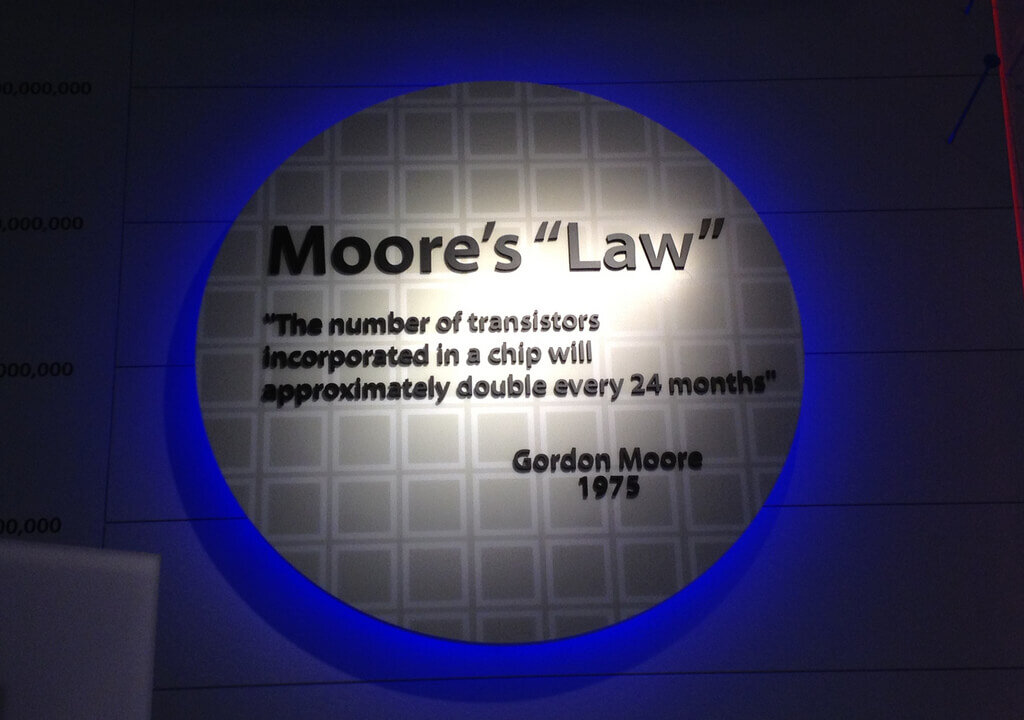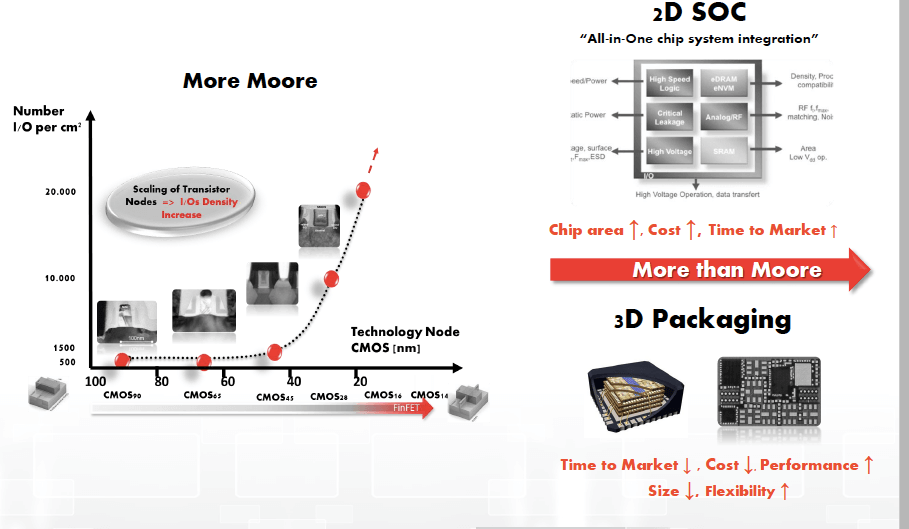Now that the industry has finally called it a day for Moore’s law, will More than Moore be our guiding star for innovation?
Analysts have been predicting the demise of Moore’s law for about as long as I have been covering 3D integration technologies. During that time, Intel has steadfastly refused to succumb to that sentiment, and has continued to pursue ways to continue CMOS scaling. That’s understandable: Moore’s law was effectively a creation of Intel’s own Gordon Moore, so they weren’t going to go down easily, even though industry experts and researchers have been poking holes in traditional CMOS scaling — and essentially Moore’s law — for years as a way to validate the benefits of interposer and 3D integration technologies; also known as More than Moore technologies.
In the past few weeks since William Holt, Intel executive VP, spoke about Intel’s shift in focus at the International Solid State Circuits Conference (ISSCC) in San Francisco, January 31 – Feb 5, 2016, posts have rippled across semiconductor trade news, and science and technology blogs, declaring that Intel is finally ready to abandon it’s 51-year-old quest for doubling performance and speed every two years by doubling the number of transistors on a chip. Instead, focus is shifting to lower power consumption, even if that means sacrificing performance.
Several of bloggers quoted Holt as stating: “We’re going to see major transitions. The new technology will be fundamentally different. The best pure technology improvements we can make will bring improvements in power consumption but will reduce speed.”
This version of Holt’s talk by Rick Merritt’s EE Times, makes it sound like Intel isn’t quite ready to let go of Moore’s law. Merritt quotes Holt as saying “The economics of Moore’s Law are sound if we focus on reducing cost per transistor.” However, Holt went on to say that the answer lies beyond CMOS scaling, and Intel will be launching research on “span tunneling FETs, ferroelectric FETs, spintronics, new III-V materials and more.” One of the key points is that while these new technologies improve power consumption, they do it at slower speeds, which kind of kills the main premise of Moore’s law.
In ExtremeTech, blogger Joel Hruska reports that Intel has acknowledged that the future of semiconductors may rely on technologies that reduce absolute performance in exchange for improved power consumption. He also noted that Intel’s motivation to shift focus away from pure performance improvements is because they are aggressively going after IoT applications, which calls for integration of disparate technologies in a small space, and that requires low power, and not spectacularly high performance. Additionally, Michael Grouthaus noted in a blog on Fast Company, that another reason it’s time to abandon Moore’s law has to do with our mobile computing habits. Faster chips have always meant more heat, which is easier to dissipate in a PC than in a tablet or smartphone.
Intel’s news has also reached the gaming community, which stands to lose from this news, as this is one space that is purely performance driven. In a post on Game Debate, a hot community for computer gamers, blogger “Joffy S” reports that the shift in focus towards energy efficiency, even at the expense of performance in the short-term, means “…we’re effectively capping out on CPU performance for now. If you buy a top-end CPU you can be confident it’s going to be gaming ready for a good long while.” He also predicted this would give AMD time to catch up.
They all must have missed the announcement by Babek Sabi, Intel corporate vice president and director of assembly and test technology development, that Intel would begin integrating 2.5D and 3D packaging technologies this year. This is how they will be able to improve performance and speed. We know it works, because AMD is already doing it for high performance gaming. Let me say this again, in case you weren’t listening: More than Moore technologies enable low power AND improved performance. In fact, Sabi said that achieving “really high-speed I/O” is not possible without multi-chip packaging.
Peter Bright posted a great blog on Arstechnica that details the rise and fall of Moore’s law, and why it’s time as a guide for what’s to come next is finally over. He doesn’t talk about Intel, but about the chip industry, and why its time to put Moore’s law behind us and look to other guides for innovation. Bright also cites an article in Nature, which announced that “The industry road map released next month will for the first time lay out a research and development plan that is not centered on Moore’s law. Instead, it will follow what might be called the More than Moore strategy: rather than making the chips better and letting the applications follow, it will start with applications — from smartphones and supercomputers to data centers in the cloud — and work downwards to see what chips are needed to support them.” I spoke about this a year ago with ITRS’s Bill Bottoms, who has been instrumental in bringing ITRS 2.0 into reality.
So did anyone from Intel actually say the words, “Moore’s law is Dead?” Not that I can find, but many say that by announcing new technology development that will put power savings ahead of execution times, its pretty much the same thing. What we do know is that the rest of the industry is ready for the next star to guide us, and for those who have invested heavily in developing 3D integration technologies, this is good news. Because guess what? With 3D integration, you get both high performance and low power. And Intel finally figured that out. Long live More then Moore! ~ FvT
























